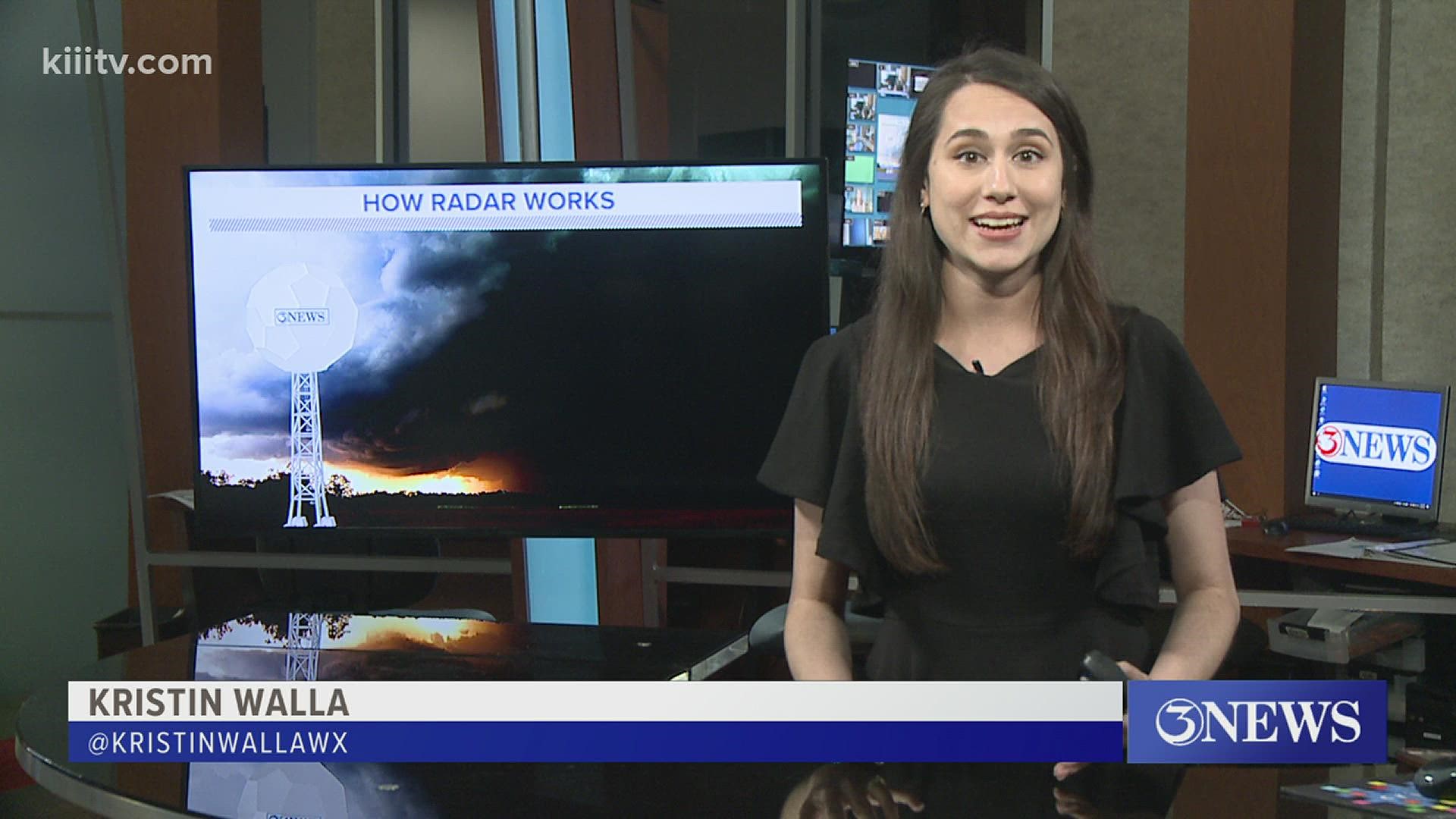Radar is one of a meteorologist's most important tools for forecasting and keeping the public safe. Radars provide critical real-time information and play a crucial role in meeting the National Weather Service's (NWS) mission of protecting life and property.
It helps us see what's going on in the atmosphere - both high and low. The lower we can see, the more weather data we can obtain. That's exactly what the Corpus Christi NWS is proposing: lowering the minimum scan angle of the radar.
A Bit of Background
There are many different types of radars, but the one used in the nationwide network of radars utilized by the NWS is an S-band radar. S-band refers to the wavelength of the pulses emitted by the radar.
The Corpus Christi radar - known as KCRP - is one of 159 WSR-88D radars in the nationwide network. WSR-88Ds are named after the year they were first put into service and their capabilities to use Doppler shift measurements to determine wind velocities (Weather Surveillance Radar, 1988 Doppler model).


The nationwide network is also referred to as Next Generation Weather Radars (NEXRAD). They are designed to detect and track weather within a roughly 230-mile distance of the radar.
KCRP is located at the Corpus Christi International Airport and was put into service in September 1996. In April 2013, the radar was equipped with dual polarization capabilities. This means that the radar can transmit horizontal and vertical pulses, which helps determine precipitation type and improves rainfall estimates.
How Weather Radars Work
The NEXRAD network is used to collect meteorological data to support weather forecasts and severe weather warnings. Radars use principles of physics such as the electromagnetic spectrum and the Doppler shift in order to identify hydrometeors (e.g., rain, hail, sleet) and other targets.
Each WSR-88D includes a 28-foot diameter dish antenna mounted on a tower of varying height (depending on local topography) and shelters electronic equipment like a standby generator. The dish rotates 360° and is covered by a fiberglass radome to protect it from the elements.
The radar transmits a radio signal, which reflects off targets and returns to the radar. Larger objects return a greater amount of energy back to the radar. The radar then measures the strength of the signal, its direction of return, and the time between transmission and return, which allows determination of the target characteristics.

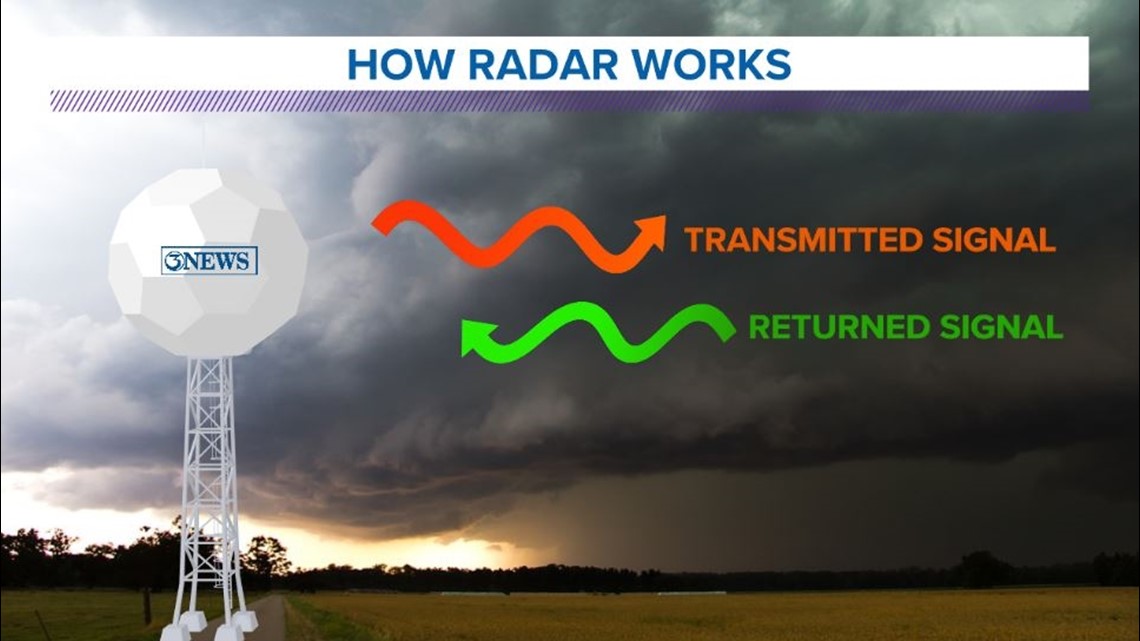
Each pulse only lasts about 0.00000157 seconds, with a 0.00099843-second "listening" period in between. Over the course of an hour, the radar is only actually transmitting a little over 7 seconds. The remaining 59 minutes and 53 seconds are spent listening.
Doppler radar can also provide information on the movement of targets in addition to their position. The radar keeps track of the phase (shape, position, and form) of the pulses it transmits and measures the shift (change) in phase from the received echo. However, only movement directly toward or away from the radar can be determined.
Radars can be tilted to scan multiple altitudes in the atmosphere. The scan angle is the number of degrees above or below horizontal at the center of the main radar beam. Radars can scan the sky at angles up to +60.0° and down to -1.0°. However, in current operation, the maximum scan angle is +19.5° and the minimum scan angle is +0.5°. This is the same minimum scan angle used by most other WSR-88Ds in the nationwide network, but KCRP wants to change that.

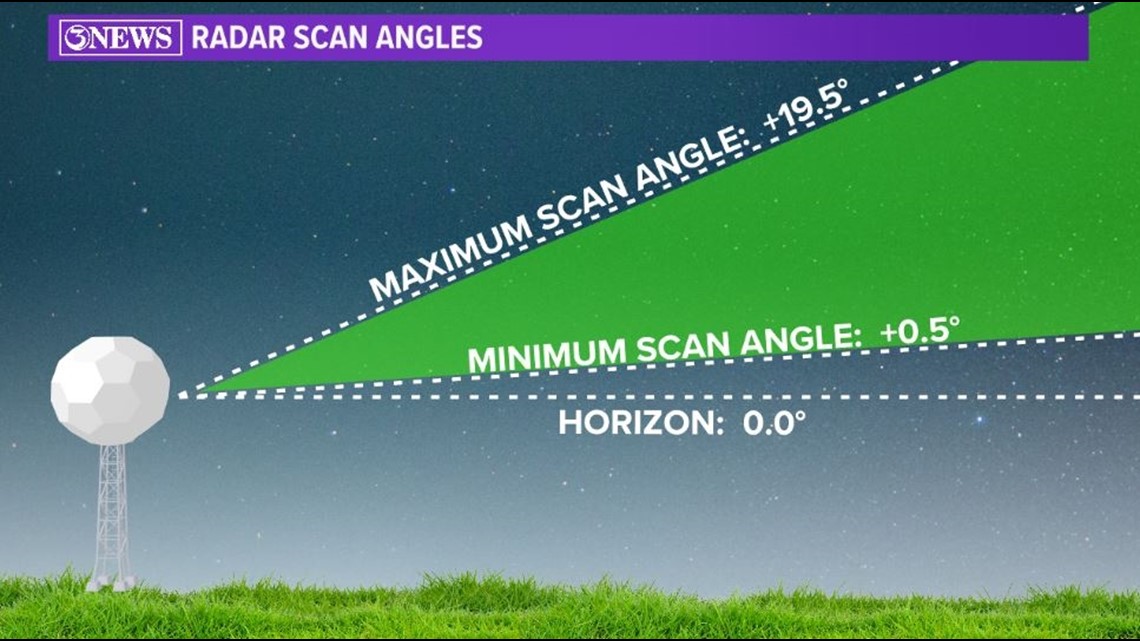
The Proposition
Because the meteorological phenomena of greatest interest (like severe thunderstorms and tornadoes) occur within a few thousand feet of the surface, radar coverage of lower portions of the atmosphere is of great value to forecasters.
However, the height above the ground where the radar can collect data increases with distance from the radar due to the earth's curvature and the upward tilt of the radar beam. The proposed action of decreasing the minimum scan angle to +0.3° would expand the geographic area with radar coverage below 10,000 feet - a substantial benefit to forecasters and data users.

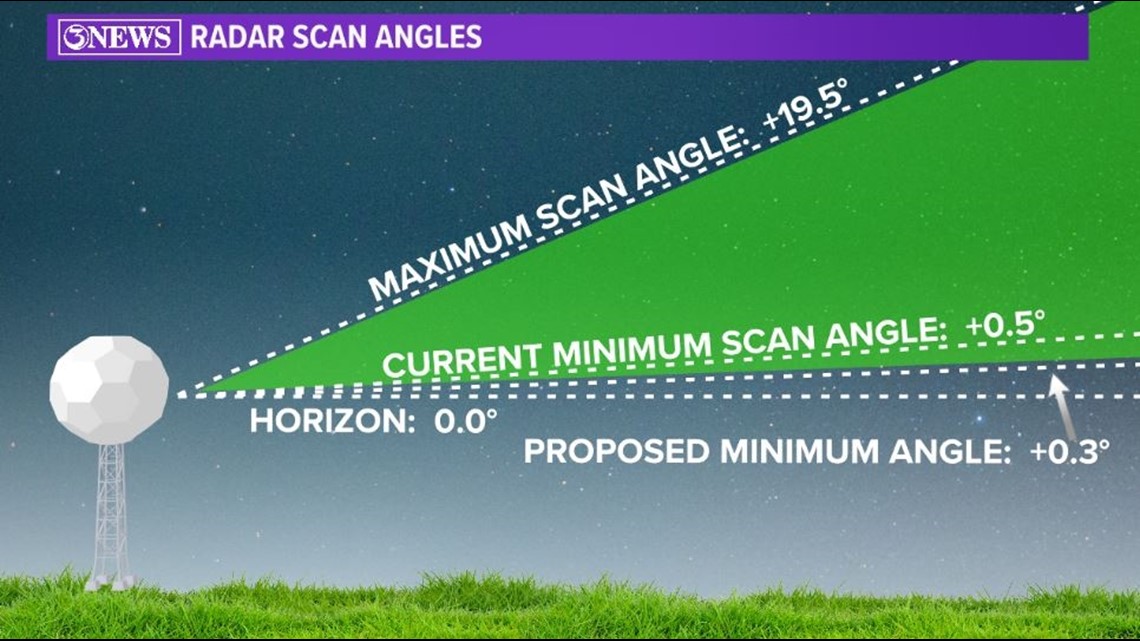
The area covered at 2,000 feet above site level would increase by 52%, and the area covered at 10,000 feet above site level would increase by 22.9%. The floor (bottom) of radar coverage over Laredo would be reduced from 6,900 feet to 5,800 feet.

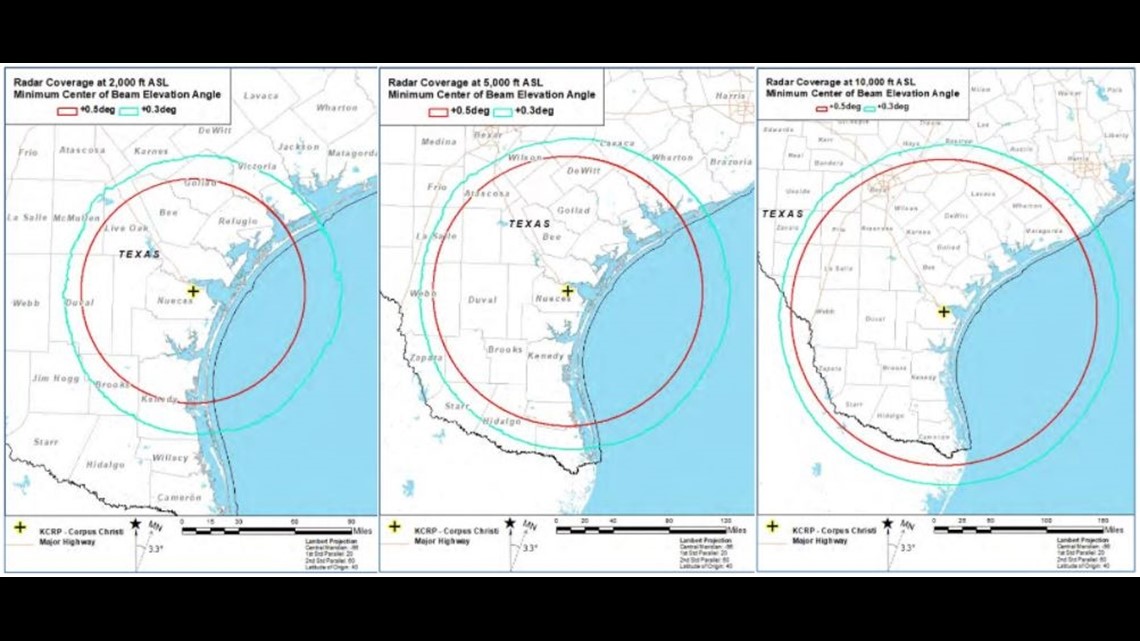
No construction or physical modification would be required - the only changes would be to the radar's operating software. The proposed action would have no effect on electric use or energy consumption.
Minimum scan angles lower than +0.3° would not increase coverage area and would result in increased ground clutter returns.
Effects of Lowering the Scan Angle
Because the radar operates in a frequency band dedicated to government radiolocation services and the main beam wouldn't impact the ground surface in the radar's vicinity, the reduction of the scan angle would not cause radio interference with television, radio, cell phones, personal communication devices, or active implantable medical devices.
Radiofrequency exposure levels in the vicinity of the KCRP WSR-88D would slightly increase but still comply with FCC and OSHA safety standards. Lowering the minimum scan angle "would not result in significant changes in the quality of the human environment," according to the NWS Environmental Assessment. It would not add to the environmental impacts of "past, present, and reasonably foreseeable future actions to cause cumulatively significant effects."
The proposed action would improve the quality of meteorological radar data available to NWS and other forecasters. This could indirectly benefit the residents and businesses in the KCRP forecast area by "improving the accuracy of forecasts and severe weather alerts, which could result in environmental benefits if weather-dependent economic activities become more efficient or safer as a result of improved weather services."

